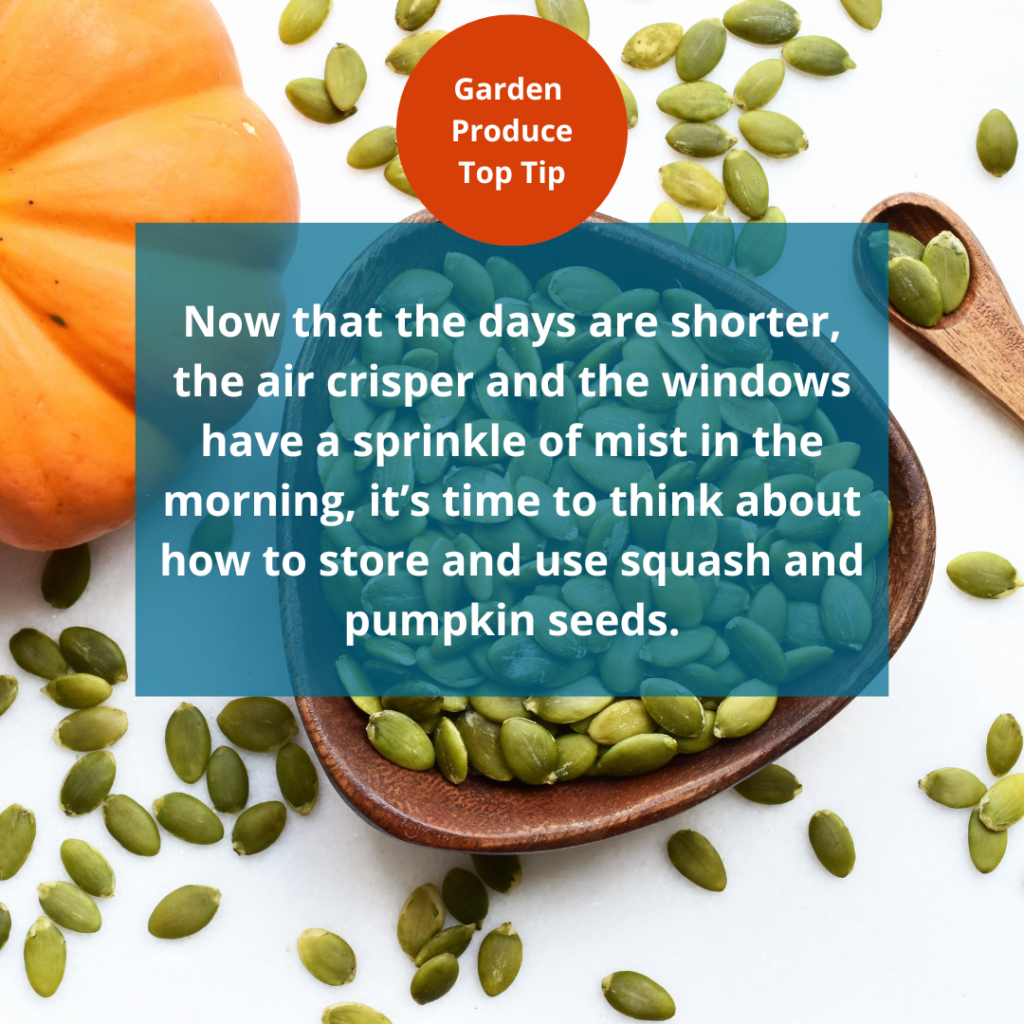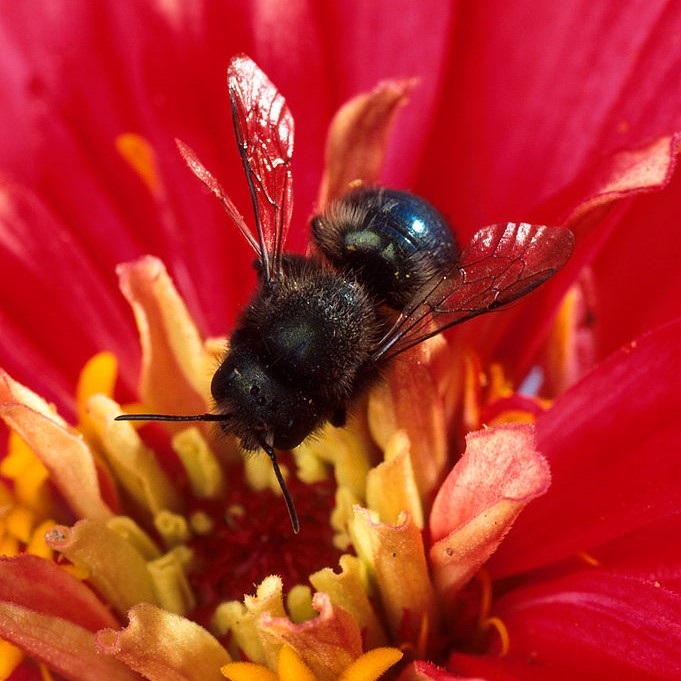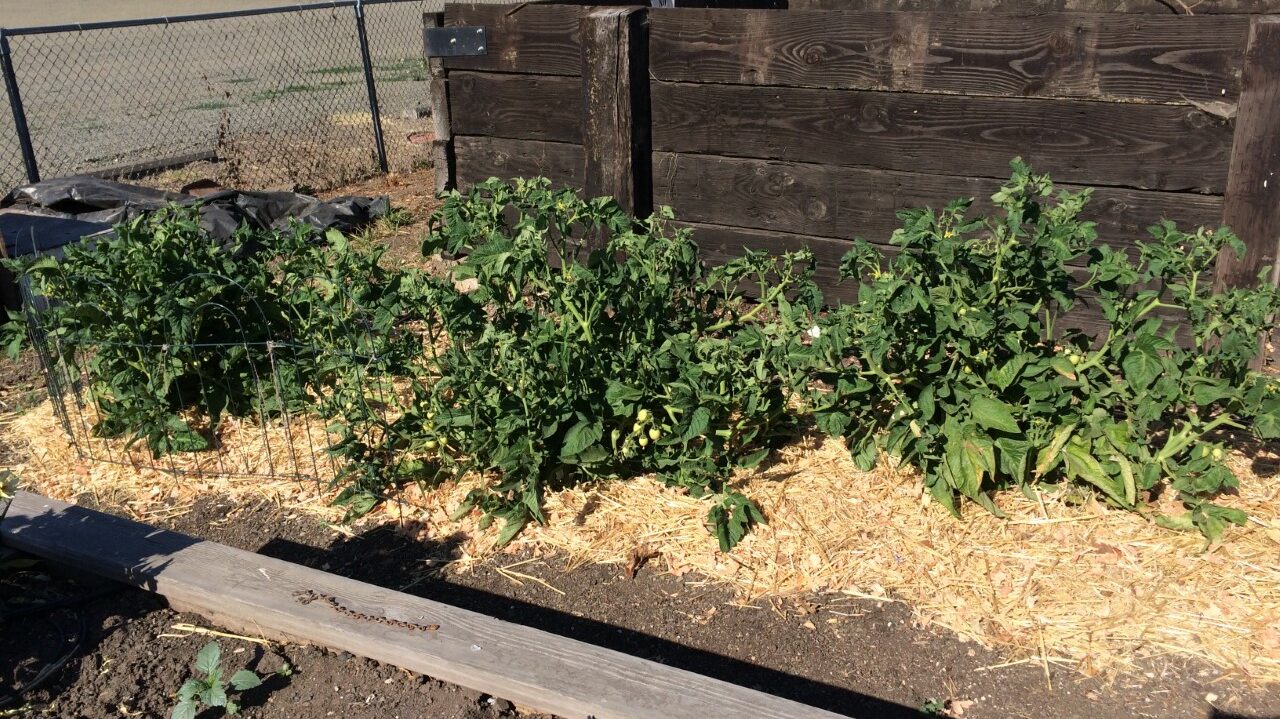By Carrie Falotico, Master Gardener Trainee
Plant pests can certainly be one of the most frustrating parts of growing your own food garden. Trap crops are part of an Integrated Pest Management plan. Here’s how they work.
A TRAP CROP can be defined as a sacrificial plant that draws away damaging insects from the desirable crop.
Essentially, a trap crop works as an alternative host that draws away invading insects, giving the main vegetable crop an added layer of protection. In some cases, insects have a preference for these alternative hosts, and when given the choice, will go to the trap crop first. After trap crops are infested with target insects, they can be controlled with timely insecticidal applications or mechanical removal. While trap cropping can be extremely beneficial, it is often not a complete solution. Trap crops will not control all insects and the use of integrated pest management (IPM) is necessary. IPM practices include rotating crops, attracting beneficial insects, and prudently using organic and synthetic chemicals.
This article gives a great explanation of trap cropping for small commercial growers. Many of these practices are also very useful in the home garden and can be done on a smaller scale.
Another great resource that details trap crops as well as intercropping and companion planting, that, when combined with trap crops, can make an even bigger impact when controlling pests.
Identification is key
You will definitely want to make sure you have correctly identified the pests causing damage to your plants. Different pests may prefer different trap crops and may require different integrative pest management (IPM) techniques. This resource is a helpful guide to identifying common pests as well as insects that are beneficial and helpful to gardeners.
Example: Flea beetles
Flea beetles (including Epitrix spp. and Phyllotreta cruciferae) are a well-known garden pest on crops like kale and broccoli. For flea beetle control, Chinese southern giant mustard (Brassica juncea var. crispifolia) is an example of a trap crop that has been used effectively in the United States to protect crucifer crops from flea beetle damage. In studies conducted at Washington State University (WSU), a diverse trap crop containing Pacific Gold mustard (B. juncea), Dwarf Essex rape (B. napus), and pac choi (B. campestris L. var. chinensis) successfully protected broccoli from the flea beetle. Diverse trap crop plantings combine plants that have different phenologies (life cycles which can be influenced by the environment, weather conditions, and nutrition), chemical profiles, and physical structures that make them more attractive to flea beetles.
It is important to note, however, that trap crops may not provide complete protection, especially during heavy pest infestations. You also have to manage the pests on the trap crop by removing them by hand and killing them, or using insecticide. Trap crops will be even more effective if several integrated pest management strategies are used together, like
- Control weeds in and around planting sites to limit food sources for flea beetles.
- Remove old crop debris so that beetles will not be able to get protection in the winter.
- Plant crops as late as possible. Plants grow faster in warmer temperatures and are more stable to resist damage from flea beetles.
- Use row covers or other screening to keep beetles out when the seedlings are growing.
- Remove row covers before the flowers come up so pollinating insects can reach the plants.
These articles give excellent detail on managing flea beetles:
Explore more
If you are interested in reading more about Integrated Pest Management and how it can help your garden thrive, this is a great resource.
I hope you find this information helpful and that these methods help you have a more enjoyable gardening experience!










